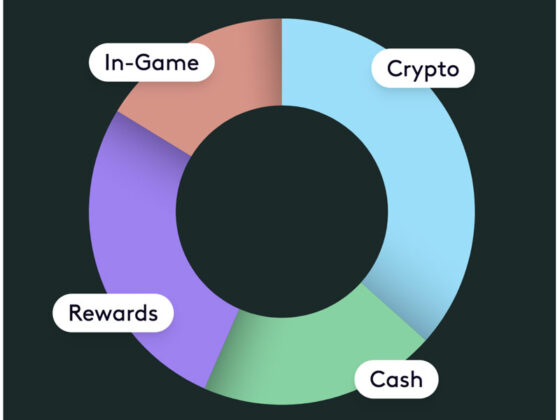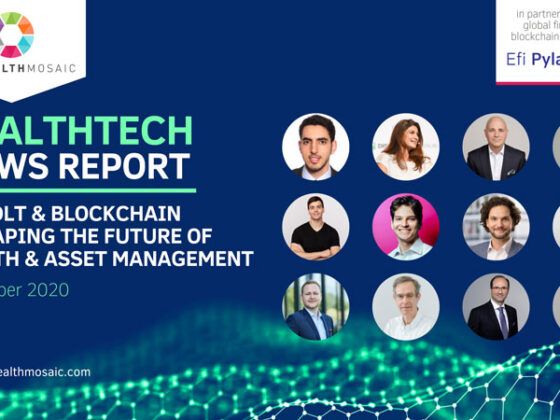Without any permission, experimenting with tech for decision making on a global scale
The Blockchain Leadership Summit at the Dolder hotel in Zurich last Friday, was an amazing international experience. Immersed in the stunning art installations of the Dolder hotel; amongst an international crowd from Russia, Kazakhstan, Liechtenstein, the Americas,…; and with panel discussions on a variety of short-term and longer-term topics of concern. Organized by Innmind, a global community of all stakeholders in the startup scene, and in partnership with Kickico

I had the pleasure to participate on a panel on the broad topic “Blockchain financial and social implementation and impact. How can the world benefit from the implementation of new technologies?”. Even though we had 40min, a wonderful moderator, Tanja Schug from Brand-Trust, and a diverse group of panelists (William Mougayar, Marc Taverner – Bitfury, Olinga Taeed – CCEG, Mauro Casellini – Bank Frick) there was so much more that we could have discussed.
In this post today I will zoom in and zoom out on a few insights that the Blockchain Leadership Summit triggered as I prepared for the panel discussion.
We are already better-off
The impact of blockchain technology has already arrived and can be measured by the mere fact that
an increasing part of human resources are devoted to thinking, experimenting, building upon the seeds of the Bitcoin blockchain, without permission.
The driving force of this reality is
the consensus that “We are not able to make decisions on a global scale”
(simple or big ones like solving poverty, climate even though we have the resources) with the current societal structure. Our civilization to date is based on collaboration processes that are central (e.g. corporations, governments, institutions etc) and even though we have adopted the internet as a global tech enabler for communication at scale, we have not yet found a tech solution to scale TRUST and decision making.
In a nutshell, this is what Blockchain is promising us. And even if the current Blockchain platforms aren’t adopted at mass scale, there are enough futurists, engineers, and entrepreneurs that will figure it out eventually.
This genie is out of the bottle too. We are steadily marching towards a different way of collaborating and organizing our processes as a global society. Luckily, blockchain technology includes a funding solution too and we also have capital increasingly investing and hoping to capture “the decentralized” technology that will be the tech solution to scale TRUST and decision making.
We are already investing in finding the tech solution to scale TRUST and decision making.
Open source innovation at scale
Blockchain is shifting us into a Linux kind of world on multiple fronts. A 10yr old freemium idea, the Github, is now not only a profitable business but a great example of “network effects and a marketplace” that has been growing organically (like in nature). Two massive asset classes are the result of this, (1) a code repository to tap into any kind of project (79mil), (2) a global decentralized social network of computer engineers and private companies that interact (28mil developers, 117k companies) (3) a powerful open-source database for due diligence and analytics on ICOs. The overhead of managing patches, versioning and hosting are all taken care of by GitHub. There is a business offering for developers, teams, and enterprises that offers an efficient way to manage projects and develop software. Ivan on tech and others are using raw data and stats from the Github to analyze altcoins.
Welcome to the new emerging era of low cost, non-chaotic (no versioning, patching, hosting nightmares) open source software a la Github (public or private)!
A de-risking technology for the finance industry and other regulated industries
Our memory of the structural problems of the financial industry that led to the subprime crisis and its consequences are not fresh but they are painfully present. One of the top five contributing factors was the huge web of complex financial products (like CDOs, CMOs, CLOs) and the related collateral management and counterparty risks that were out of control. When I say “out of control” I mean that issuers, investors, and regulators were unable to have reliable data and thus any risk management capability. Goldman Sachs had at the time its own relational database (graphic database) that gave them a huge advantage in figuring out within a day or two their exposure and managing it better than others.
Imagine a world that international regulatory standards (whether from the BIS or in another way) require all financial institutions to adopt blockchain technology for all over the counter financial structures, all SPVs and trusts. The process has shyly but surely already started with the fairly standardized but still OTC, Swaps and derivatives world.
Last August, ISDA (International Swaps and Derivatives Association) in collaboration with the global law firm Linklaters released a whitepaper with the legal considerations for the application of executable distributed code contracts (EDCCs) (i.e. smart contracts).
Vitalik Buterin himself has touched upon how CDOs (Collateralized Debt Obligations) can be launched on the blockchain so that the risks associated with the “traditional structure” are mitigated. CDOs are tranches created from a pool of similar loans (e.g., mortgages, car loans, student loans). The tranches created have different seniority levels and risk profiles. In the traditional structure, there were too many intermediaries involved and an opaque structure that resulted in a disaster when the markets turned sour.
The Dharma protocol (covered last month in Bonds & loans on the Blockchain) can be used for CDOs – Building Collateralized Debt Obligations with Dharma Protocol.
CDOs on the blockchain are one example of automating Trust at scale and de-risking the financial system.
Startup pitches
The BLS conference was packed with panel discussions and parallel workshops (Polyswarm, ByteBall, NiceHash) and startup pitches in the afternoon. The winners were (No.1) LiveTree Adept and (No.2) Digipharm. LiveTree Adept, a blockchain use case for the film and TV industry with the mission to empower and reward the creators of such content and the viewers. Digipharm, a healthcare blockchain use case taking aim at the problem the burden on health systems, the risk of patients being denied innovative treatments, and the barriers to reimbursement for manufacturers.
And two special prizes (Lakeside Partners training) were decided by the jury on the spot, for Wunder and PhotoChain. PhotoChain is a blockchain use case for digital stock photography and Wunder is a blockchain use case to build a decentralized art museum for digital art.
Sources of inspiration: (a) Thought leadership from Antonopoulos: The Courage to Innovate Without Permission (b) Use the Github to analyze: Ivan on Tech youtube
Disclosure: I am an advisor to the Wunder project launched out of the IconiqlabGerman accelerator. Wunder will be the token that will allow Artplus (a startup from Belgium) to integrate their business on the blockchain and create a marketplace for digital artists, collectors, galleries, curators, advisors, art fairs and enthusiasts in the new media art industry (video, sound, etc).



